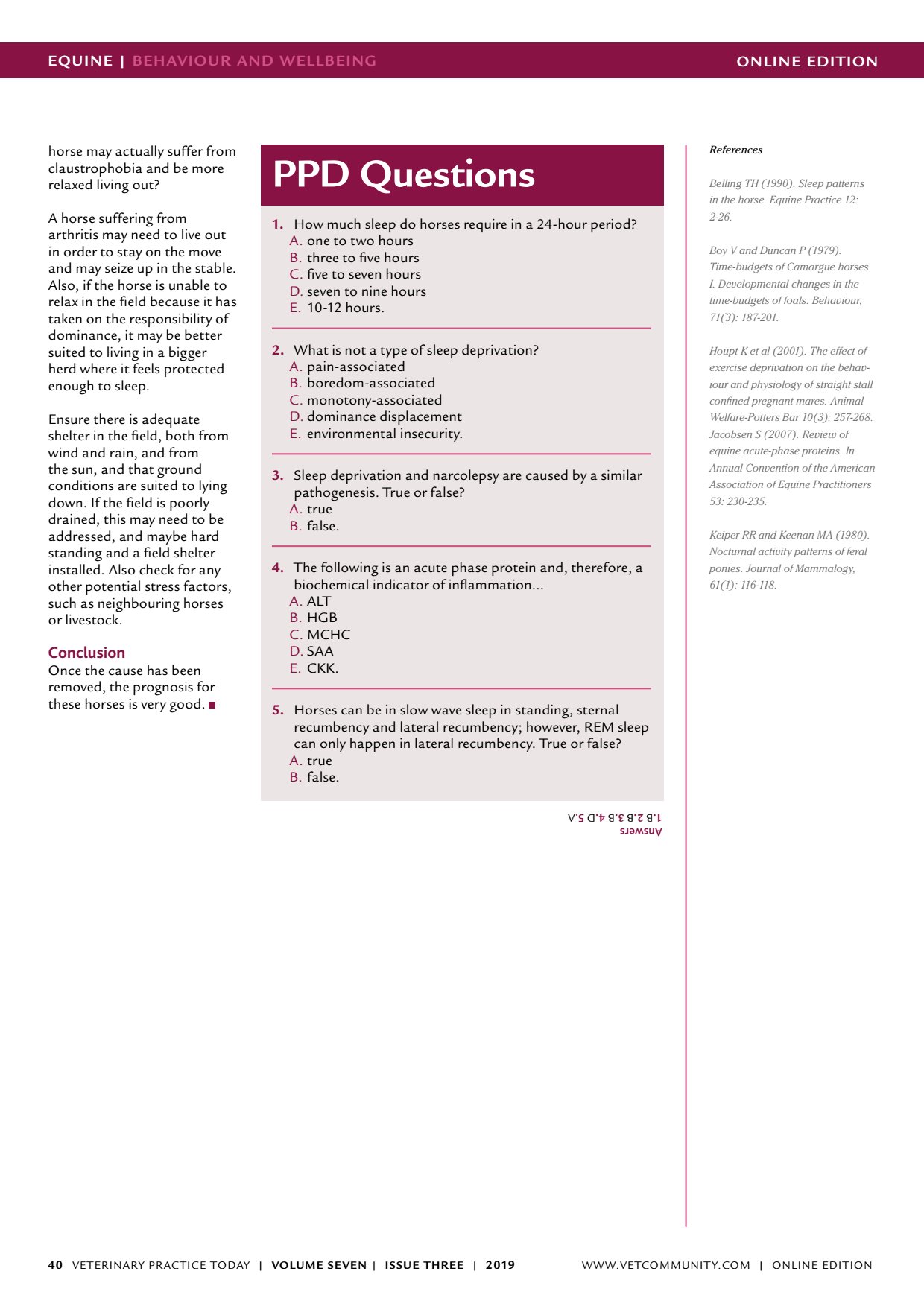Questions Conclusion ONLINE
ONLINE EDITIONEQUINE | BEHAVIOUR AND WELLBEING VETERINARY PRACTICE TODAY | VOLUME SEVEN | ISSUE THREE | 2019 40 References Belling TH (1990). Sleep patterns in the horse. Equine Practice 12: 2-26. Boy V and Duncan P (1979). Time-budgets of Camargue horses I. Developmental changes in the time-budgets of foals. Behaviour, 71(3): 187-201. Houpt K et al (2001). The effect of exercise deprivation on the behav- iour and physiology of straight stall confined pregnant mares. Animal Welfare-Potters Bar 10(3): 257-268. Jacobsen S (2007). Review of equine acute-phase proteins. In Annual Convention of the American Association of Equine Practitioners 53: 230-235. Keiper RR and Keenan MA (1980). Nocturnal activity patterns of feral ponies. Journal of Mammalogy, 61(1): 116-118. horse may actually suffer from claustrophobia and be more relaxed living out? A horse suffering from arthritis may need to live out in order to stay on the move and may seize up in the stable. Also, if the horse is unable to relax in the field because it has taken on the responsibility of dominance, it may be better suited to living in a bigger herd where it feels protected enough to sleep. Ensure there is adequate shelter in the field, both from wind and rain, and from the sun, and that ground conditions are suited to lying down. If the field is poorly drained, this may need to be addressed, and maybe hard standing and a field shelter installed. Also check for any other potential stress factors, such as neighbouring horses or livestock. Conclusion Once the cause has been removed, the prognosis for these horses is very good. PPD Questions 1. How much sleep do horses require in a 24-hour period? A. one to two hours B. three to five hours C. five to seven hours D. seven to nine hours E. 10-12 hours. 2. What is not a type of sleep deprivation? A. pain-associated B. boredom-associated C. monotony-associated D. dominance displacement E. environmental insecurity. 3. Sleep deprivation and narcolepsy are caused by a similar pathogenesis. True or false? A. true B. false. 4. The following is an acute phase protein and, therefore, a biochemical indicator of inflammation A. ALT B. HGB C. MCHC D. SAA E. CKK. 5. Horses can be in slow wave sleep in standing, sternal recumbency and lateral recumbency; however, REM sleep can only happen in lateral recumbency. True or false? A. true B. false. Answers 1. B 2. B 3. B 4. D 5. A WWW.VETCOMMUNIT Y.COM | ONLINE EDITION
